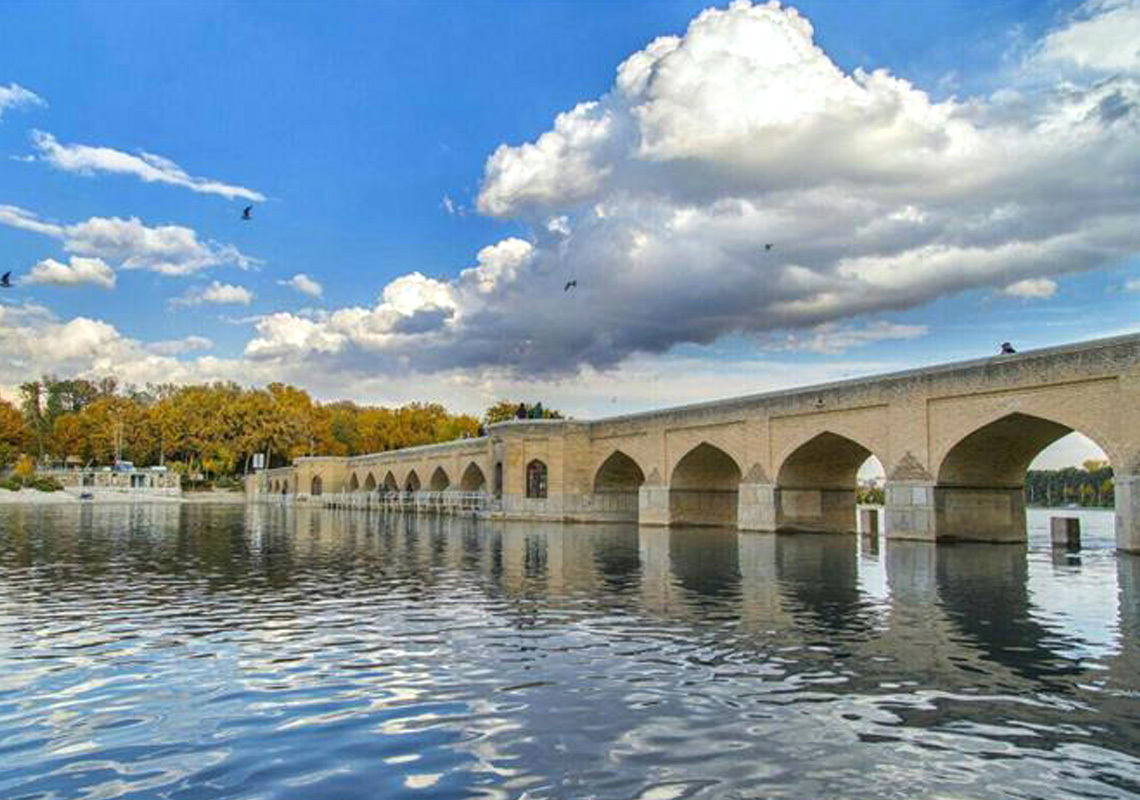In Isfahan throughout history, especially during the peak of Safavi era, beautiful and magnificent structures of Iranian architecture have been built, which are nowadays welcomed by domestic and foreign tourists. One of these magnificent monuments is the Choobi bridge of Isfahan.
Choobi means wooden. Choobi Bridge is not far from the historical residence in Isfahan. There are only 4.8 km distance from this historical site in Isfahan to Kianpour boutique hotel. Gusts at this luxury hotel in Isfahan walk through Charbagh or they can call a cab, use public transportation like subway, bus and so on, in order to get there.
The Choobi Bridge with 6 meters wide and 147 meters long, was not used by public, moreover, it was used for the connection of the royal gardens on the north and south sides of the river, the "Garden Lake" or bagh daryache with the extensive gardens of Saadat Abad between the Bridge of Allah Verdi Khan and the Khajoo Bridge. The majestic palace and buildings of the Haft-dast and the Koshkul were connected by this bridge. Originally, the bridge was for the Safavi kings, emirs, elders, guests, and travelers who were allowed to meet King Abbas II.
In the middle of the bridge, there were two towers with three springs running from each corner. One foreigner who visited the bridge wrote that "the bridge was built with fourteen arches and a passageway to bring water to the Haft-dast Palace."
The beautiful and magnificent buildings of Saadat Abad, the Haft-dast, Aynehkhane, Kolah farangi, Namakdoon, around this bridge, were destroyed by Massoud Mirza Zele Sultan, the ruler of Isfahan during the reign of Nasser al-Din Shah Qajar.
There was a delicate little atmosphere of Persian rock on the bridge that flows water from one end to the other, which is why it was called the ‘Joey’ Bridge. However, Chardin explicitly made it a wood-based bridge in his book. The stone has been mentioned and it cannot be said that the title of "Wooden Bridge" is incorrect.
Its original name was Saadat Abad Bridge, and was also called Seven Hand (haft dast) Bridge by the seven royal palaces of Shah Abbas II.
Also in the eastern and western part of the bridge, river water was stacked on top of the lake, which is why it was called the "lake bridge". In the book of Fayyid al-Safwiyyah, a reference to the Safavi history, the bridge is named "Saadat abad Bridge". The author of that book in the Safavi era mentioned Saadat abad as the "New City" in the year 1069 and in the 17th year of Shah Abbas's rule.
Historical Events
After a year of minor disagreement and some issues in the government, after the invitation of Aghanjafi and Haj Agha Nurollah Najafi Isfahani, Zakir al-Saltanah, Bakhtiari troops reached the Abrisham Garden camp. A group of Bakhtiariers, led by Zargham al-Saltanah, crossed the bridge to the city to join people in the Shah Mosque. The clash between the Qajar government and the Bakhtiari riders culminated in the Battle of Naqshe-jahan, which ended with the defeat of the ruling troops and the escape of Iqbal al-Dowleh. During this event, Zargham-e Saltaneh was the first Bakhtiari chief to enter Isfahan. Isfahan pervious ruler became a refuge in the Russian Consulate.







